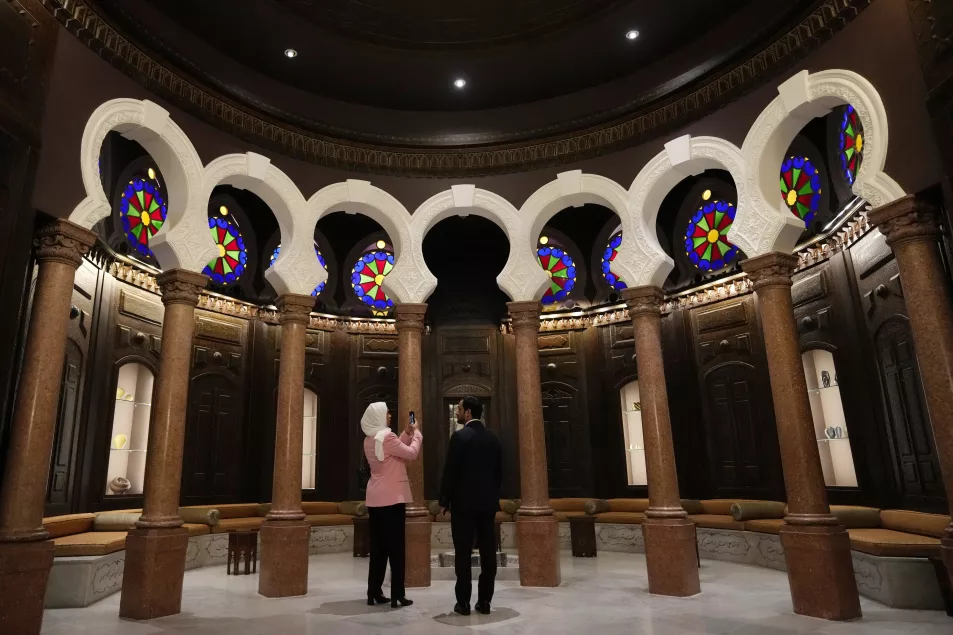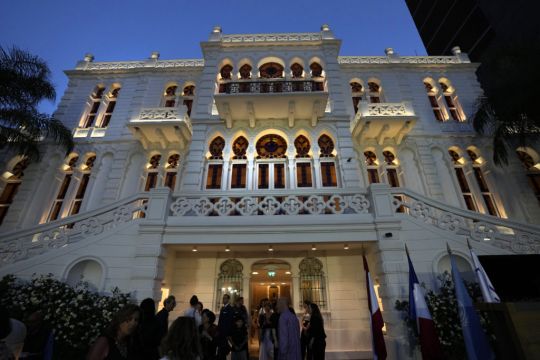The Sursock Museum in Beirut has reopened to the public almost three years after a deadly explosion in the city’s port reduced many of its treasured paintings and collections to ashes.
The reopening on Friday night offered Beirut residents a rare bright spot in a country reeling from a crippling economic crisis that has left around three-quarters of Lebanon’s population of six million in poverty.
Originally built as a private villa in 1912 on a hilltop overlooking the city’s Achrafieh area, the opulent residence integrated Venetian and Ottoman styles.
Its owner, famed Lebanese art collector Nicolas Ibrahim Sursock, bequeathed his beloved home to his people, to be turned into a contemporary art museum upon his death in 1952.
The museum housed Lebanese art dating back from the late 1800s, including the work of distinguished painter Georges Corm and Fouad Debbas’ library of 30,000 photographs — one of the largest private photo collections.

The photos are from across the Levant, a region encompassing countries along the eastern Mediterranean, from Turkey to Egypt, from 1830 until the 1960s.
In 2008, a seven-year project renovated and expanded the museum, relaunching it in 2015.
However, an explosion on August 4th, 2020, in Beirut’s port — only about 800 metres away — hit the museum fully front on.
Its stained-glass windows were shattered, doors were blown out and almost half the artwork on display was damaged.
The explosion – set off by tons of improperly stored chemicals – ripped through much of Beirut, killing more than 200 people and injuring in excess of 6,000.
The destruction in the museum was unprecedented, said director Karina El Helou, a level unseen even during Lebanon’s 1975-1990 civil war.

Some 70 per cent of the building was badly damaged, as were 66 of the 132 art pieces on display, she said. Glass shards tore through Dutch artist Kees Von Dongen’s portrait of Nicolas Sursock.
Two months after the explosion, then-museum director Zeina Arida launched a fundraising campaign, estimating the damages to be around $3 million at the time.
The museum eventually raised more than $2 million to restore the building and the artwork with support from Italy, France, Unesco and various private organisations.
Dozens of people gathered in Sursock’s large, tree-lined courtyard on Friday evening, serenaded by a choir and a band performing on the entrance stairs for the reopening.
The museum, looking almost exactly as it did before the blast, drew sighs of appreciation. Others remembered how much Beirut has withered since then and how scores of artists have left the country.
“I now hope all the friends of the Sursock who may have left Lebanon in recent years at least come back to visit us,” the museum’s chairman, Tarek Mitri, told The Associated Press as he greeted guests.







